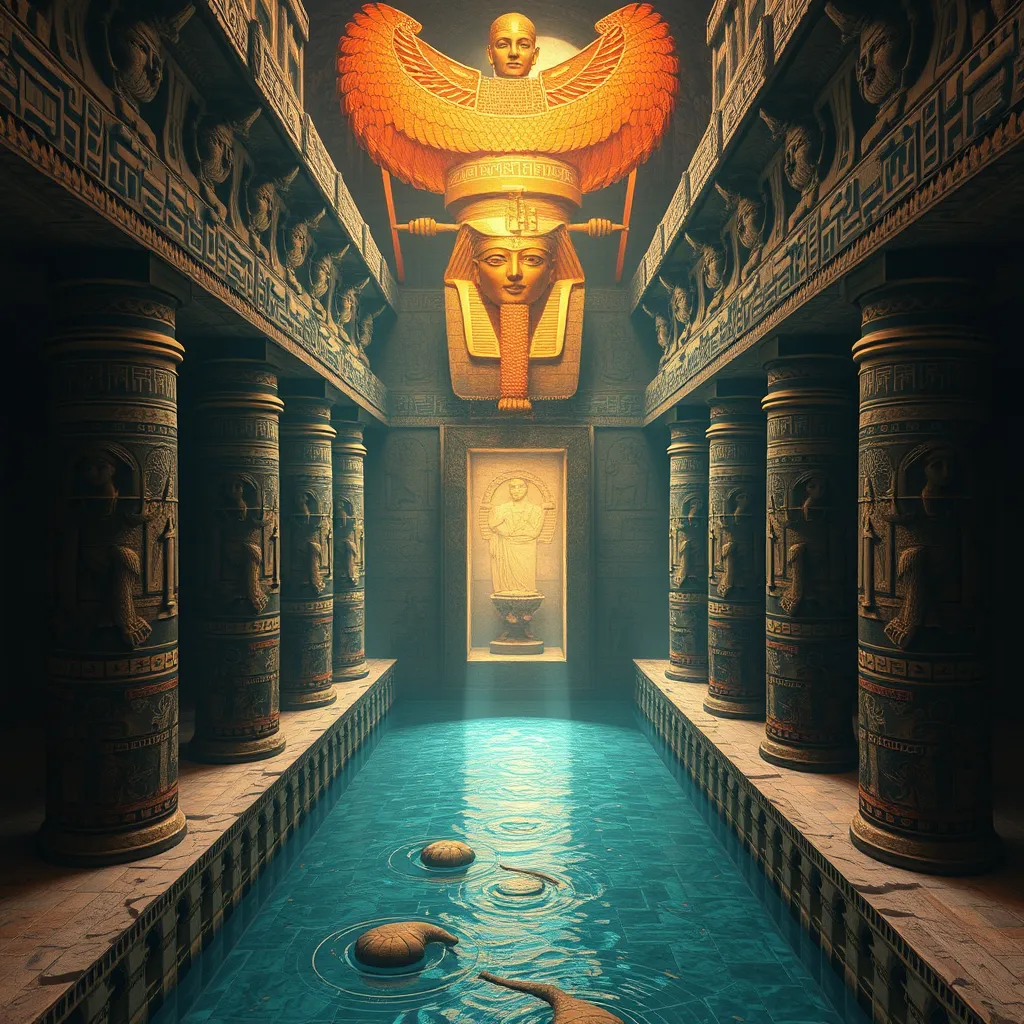The Duat: Exploring the Myths and Legends of the Egyptian Underworld
I. Introduction to the Duat
The Duat, often referred to as the Egyptian Underworld, is a complex and significant aspect of ancient Egyptian belief systems. It represents not just a physical space, but a metaphysical realm that embodies the journey of the soul after death. In the context of ancient Egyptian spirituality, the Duat was seen as a necessary passage for the deceased to navigate in order to reach the afterlife, known as the Field of Reeds, where eternal peace and happiness awaited.
The significance of the Duat lies in its representation of the unknown, the trials of the afterlife, and the ultimate judgment that the soul must face. It serves as a reminder of the moral and ethical standards upheld during one’s lifetime, influencing how individuals conducted themselves in their earthly existence.
II. Historical Context of the Duat
The concept of the Duat evolved throughout the different dynasties of ancient Egypt, reflecting changes in religious practices and beliefs. Initially, the Duat was a vague concept, but as time progressed, it became more defined and detailed, particularly during the New Kingdom (c. 1550-1070 BCE).
Key texts and artifacts that describe the Duat include:
- The Pyramid Texts, which date back to the Old Kingdom, contain some of the earliest references to the Duat.
- The Coffin Texts, which expanded upon the Pyramid Texts, provided more intricate details about the afterlife.
- The Book of the Dead, a guide for the deceased, includes spells and instructions for navigating the Duat.
These texts reflect the evolving understanding of the afterlife and the Duat, illustrating the beliefs of different periods and the importance placed on the journey of the soul.
III. Geography and Structure of the Duat
The Duat is often depicted as a vast and complex landscape consisting of various realms and features. It is believed to contain numerous regions, each with its own unique characteristics and challenges for the deceased. Some of the notable landscapes within the Duat include:
- The Waters of Chaos: A primordial abyss that the soul must cross, representing the unknown and the challenges ahead.
- The Field of Reeds: The ultimate destination for the righteous, a paradise that mirrors the earthly life.
- The Hall of Judgment: Where the soul is weighed against the feather of Ma’at, symbolizing truth and justice.
The symbolic significance of these landscapes is profound, as they reflect the ancient Egyptians’ beliefs about life, death, and the moral order of the universe.
IV. Deities and Spirits of the Duat
Numerous deities are associated with the Duat, each playing a crucial role in the afterlife journey. The major gods include:
- Osiris: The god of the afterlife who presides over the judgment of souls and represents resurrection and renewal.
- Anubis: The jackal-headed god associated with mummification and the protection of the dead, guiding souls through the Duat.
In addition to these prominent figures, there are numerous lesser-known deities and spirits that aid or hinder souls on their journey. These include:
- Thoth: The god of wisdom and writing, who records the results of the judgment.
- Ammit: A fearsome creature that devours souls deemed unworthy after their judgment.
These deities play essential roles in the beliefs surrounding the afterlife, representing both guidance and the consequences of one’s actions.
V. The Journey Through the Duat
The journey through the Duat is a central theme in ancient Egyptian mythology. Upon death, the soul must navigate the Duat, facing various trials and challenges that test its worthiness. The process generally includes:
- Crossing the Waters of Chaos: The soul must navigate treacherous waters, often filled with monsters and obstacles.
- Encounters with Deities: The soul meets various gods and spirits who will either assist or challenge them.
- The Hall of Judgment: Here, the heart of the deceased is weighed against the feather of Ma’at to determine its purity.
Souls that pass the judgment are granted access to the Field of Reeds, while those who fail face dire consequences.
VI. Myths and Legends Associated with the Duat
Myths surrounding the Duat often illustrate the beliefs and values of ancient Egyptian culture. One popular story involves the journey of the sun god Ra, who traverses the Duat each night, battling the serpent Apophis to ensure the sun rises each day. This myth symbolizes the eternal struggle between order and chaos.
Another significant myth involves the resurrection of Osiris, who was killed by his brother Set. His resurrection symbolizes hope and the eternal cycle of life and death, reinforcing the belief in the afterlife and the importance of moral living.
These myths serve not only to entertain but also to convey deeper truths about existence, morality, and the afterlife.
VII. The Duat in Art and Literature
The Duat has been vividly represented in ancient Egyptian art, particularly in tomb paintings and reliefs. These artworks often depict scenes from the afterlife journey, including the judgment of souls and the landscapes of the Duat.
Literary sources, such as the Book of the Dead, provide detailed descriptions of the Duat and the necessary spells to navigate its challenges. The Book of the Dead served as a vital guide, ensuring that the deceased could successfully traverse the afterlife.
VIII. The Legacy of the Duat in Modern Culture
The Duat continues to influence contemporary literature, film, and art. Many modern works draw inspiration from ancient Egyptian mythology, exploring themes of death, the afterlife, and the journey of the soul. Movies like “The Mummy” and “Gods of Egypt” incorporate elements of the Duat, captivating audiences with the allure of ancient beliefs.
Moreover, the fascination with ancient Egyptian culture and its beliefs about the afterlife persists, prompting ongoing scholarly research and popular interest. The Duat remains a powerful symbol of the complexities surrounding life, death, and what lies beyond.





